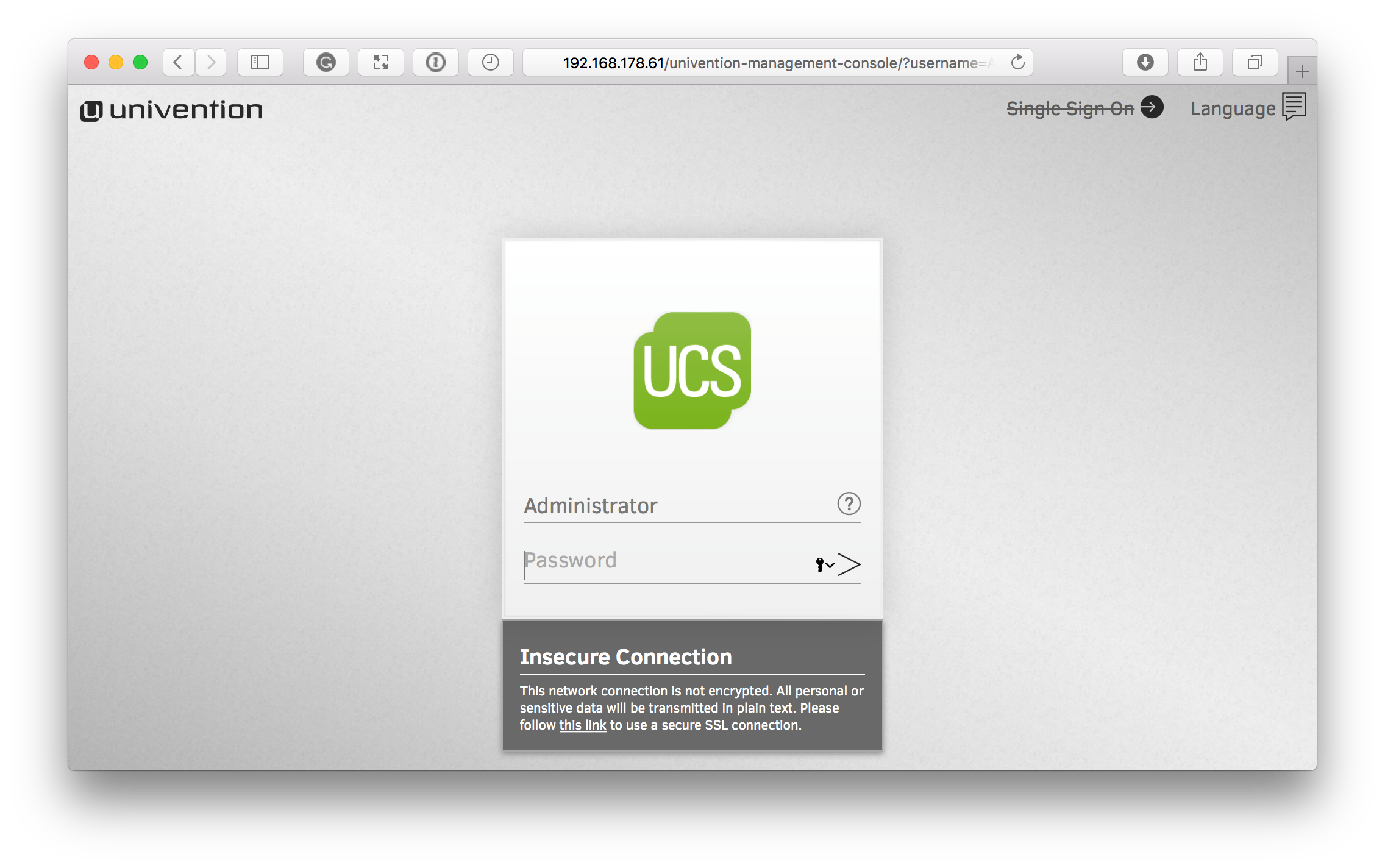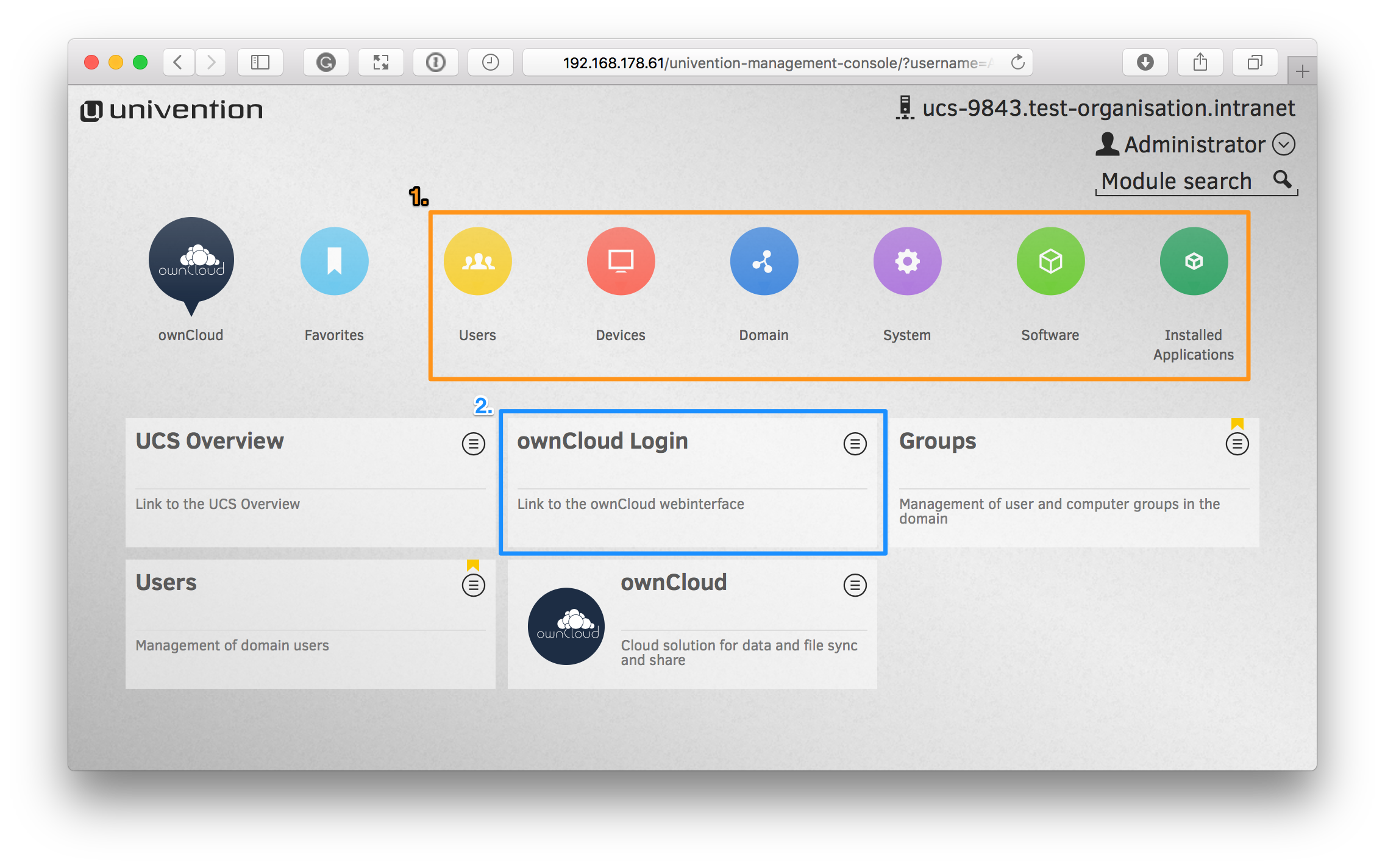How to Install the Appliance
Introduction
The installation process is a little involved, but not too much. To keep it succinct, you need to:
-
Step through the Configuration Wizard
-
Activate the configured appliance
-
After that, you can access the running instance of ownCloud and further Administrate it to suit your needs.
| It’s recommended to setup the appliance with a working DHCP Server and access to the internet. |
| The appliance has to be activated with a license that you will receive from Univention via email. This license has to be imported into the appliance via the web interface. |
Download the Appliance
First off, you need to download the ownCloud X Appliance from the ownCloud Appliance download page. You can select various appliance types to download like VMWare ESXi, Oracle VirtualBox, QCOW2 (KVM) and VMWare Player.
Fill out the form to download the documentation which will be delivered directly in your inbox. Alternatively you can view it online.

The virtual appliance files are around 1.4GB in size, so may take some time, depending on your network bandwidth.
You can also download it from the Appliance download page.
Launch the Appliance
Once you’ve downloaded the virtual appliance file, import it into your virtualization software, accept the T’s & C’s of the license agreement, and launch it. The example below shows this being done using VirtualBox.

The recommended network mode for the ownCloud Appliance is bridged mode.
Don’t Forget the IP Address and the Administrator Password. You will need them to use the Appliance.
Configuration Wizard
Once imported, start the appliance. Doing so launches the installer wizard which helps you specify the core configuration.
Follow this screenshot guide to securely and easily configure your appliance.

Here, you can choose your language. Currently there are 2 options: English and German. You can set your city, which will then automatically set the localization settings in the next screen.

Here, you can set your default language, time zone and keyboard layout. This will be set automatically if you enter your City in the previous screen.

Here, you will see the automatically obtained network configuration if you have a DHCP server in your network. If not - you will have to set this yourself. You can also enter an alternate DNS server if you need one.

This is an important setting. Choose the default option if you don’t have deep knowledge about Microsoft Active directory and the univention system.

The second important setting during this setup: the Administrator password. You will need this to log in to your appliance and administer it. Please write this password down. Setting your email address here is optional, since you can set it later on.

Here, you can set or change the FQDN to your custom address.

Here, you get a finalized confirmation screen of what you have entered / set and you can finish the process. Note that if you let the check box to update your system in - the installation will take considerably longer. Keep his in mind. You can apply the updates later on if you choose to skip it during the installation.

Wait until the setup is finished.

When the installation is complete, you will see this screen informing you that the installation was successful.

Activate the Appliance
The VM will show you this screen, showing the ip address you have to navigate to in order to activate your appliance. The freshly started appliance runs on a self-signed certificate. Your web browser most likely will warn you about this and ask for confirmation, before you can proceed. It is recommended to install a proper certificate later on.

Enter your email-address to receive a license to activate your Appliance. Without activation you can not login in to the appliance.

You will receive the email shortly. Download the license and import it in to the appliance.

Once activated, you will see this screen, informing you that the appliance was successfully activated.
Administer the Appliance
Once activated, you should be redirected to the portal, which you can see below.

If you want to create new users and groups, or download apps from the Univention appcenter click on the System and domain settings. Login as the "Administrator" using the password that you supplied during the configuration wizard earlier.

If you are not redirected to the appliance login page, you can open it
using the following url:
https://<ip address of the virtual machine>/univention-management-console.
After you’ve done so, you will now be at the Univention management console, which you can see below.

The management console allows you to manage the virtual appliance (1), covering such areas as: users, devices, domains, and software. You will also be able to access the ownCloud web interface (2).
The default username for the ownCloud is: owncloud and so is the
password. The password is not the password you supplied during the
configuration wizard.
For security reasons rpcbind should be disabled in the appliance. An
open, from the internet accessible portmapper service like rpcbind can
be used by an attacker to perform DDoS-Reflection-Attacks. Furthermore,
the attacker can obtain information about your system, for example
running rpc-services, or existing network shares. The German IT security
agency "BSI" reported, that systems with an open rpcbind service were
used to perform DDoS-Reflection-Attacks against other systems.
If you want to create NFS shares on the appliance and give someone
permission to access them, then you can enable rpcbind again.
|